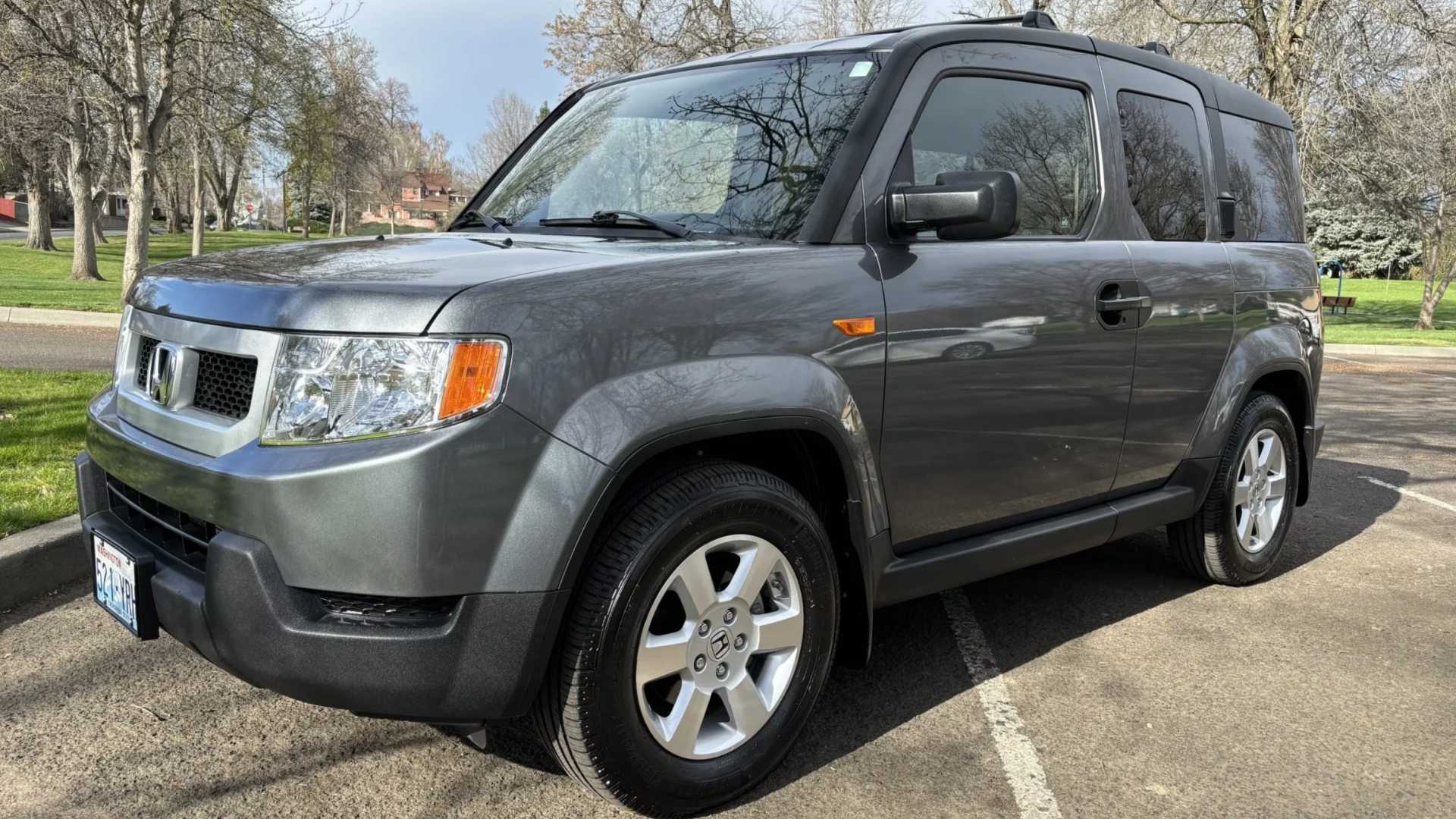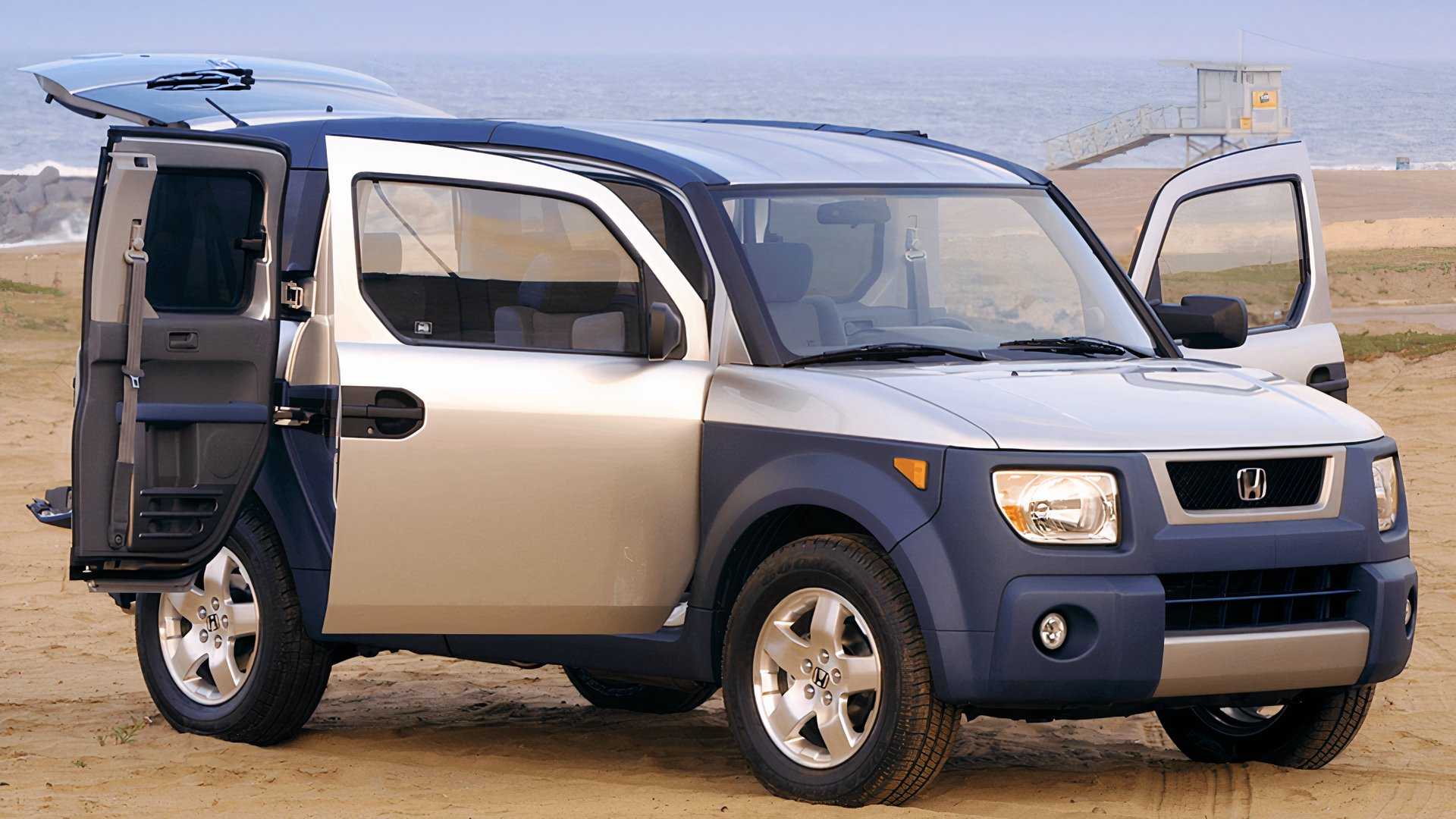Quick Links
-
A Concise Account of the Fleeting Existence of the Honda Element
-
Top Honda Element Models to Consider
- 2009 Honda Element
- Reliability Overview: 2009 Element
- 2010 Honda Element
- Reliability Overview: 2010 Element
- 2011 Honda Element
- Reliability Overview: 2011 Element
-
Honda Element: Periods to Steer Clear Of
- 2004 Honda Element
- 2003 Honda Element
-
Summary: A Unique Container Offering Exceptional Functionality
Honda Has provided us with some of the most adaptable vehicles ever. Honda Element It was one of those innovations that were well ahead of its era, yet it succeeded in cultivating a dedicated fan base that persists even today. Both avid car enthusiasts and regular consumers appreciated the Element’s boxy design, spacious interior, and numerous additional features.
However, what was considered the peak year forHonda Element’s reliability? Below is all the information you require regarding whichmodel years stood out as dependable and which did not fare quite as well.
The reliability information has been gathered from reliable sources such as the NHTSA. Both recalls and grievances mentioned, along with insights from customer polls, have been considered. The authoritative references used are cited at the conclusion of this piece.
A Concise History of Honda's Fleeting Model: The Element

It's not typically usual for a vehicle to reach production looking this similar to its concept. concept car , however, the Element stands out as a notable exception. It made its debut for the 2003 model year following development from the 2001 Honda Model X prototype. Essentially classified as a compact crossover, the Element utilized an adapted version of this platform. second-gen CR-V The platform created its distinct segment with rather unconventional styling. Unfortunately, the Element underwent just one generation, receiving a minor update in 2007 before ceasing production in 2011.
Both manual and automatic transmission options were available, and for the Element’s sole update in 2007, it underwent certain changes. K24 engine calibrated to produce 166 horsepower and 161 lb-ft of torque.
Apart from minor aesthetic modifications such as different paint options, a revised hood and grill design introduced in 2009, and the elimination of the rear moonroof, the Honda Element stayed mostly unchanged until it was discontinued in 2011.
Top Honda Element Models to Consider
Overall, the Honda Element enjoyed a successful tenure. Despite a few problematic versions, many owners found certain years to be exceptionally good. This vehicle developed a dedicated fan base due largely to the dependability of its improved K24 engine and its practicality. During what could be considered peak times for this car, customer feedback showed minimal dissatisfaction. We factored in various concerns when ranking each version, particularly considering the widespread airbag recall campaigns that affected all production years—a significant issue worth noting.
2009 Honda Element

In 2009, the Honda Element stood out as an excellent year for this vehicle because it received minimal criticism, experienced no major recall issues, and garnered positive reliability ratings from well-respected evaluators. According to Car Complaints data, just three grievances were filed; two related to trivial matters such as loose trim components. Although these can be irritating, they won’t prevent you from arriving at your intended location. The sole additional issue reported involved a peculiar odor emanating from the ventilation system noted by one buyer. All things considered, the 2009 edition proved itself as a dependable design praised notably by reliability authorities including RepairPal.
Reliability Overview: 2009 Element
- JD Power Quality and Reliability Score: Not Available
- RepairPal Reliability Rating: 4.3/5
- Number of Complaints About Car Issues: 3
2010 Honda Element

The 2010 version is essentially indistinguishable from the 2009 edition but does not have the issue where the trim pieces fall off. Similar to previous yearly models, it faces certain challenges related to airbags; however, significant concerns regarding engines or transmissions do not arise here as they did in earlier versions. Additionally, unlike past iterations, seat mounting issues such as them turning into rocking chairs or derailing aren’t reported for this particular model. This specific iteration scored an impressive 83 out of 100 in terms of quality and dependability according to J.D. Power ratings and maintains a solid 4 out of 5 reliability rating provided by RepairPal. Over recent production cycles, many initial flaws were addressed, resulting in a practical and appealing crossover SUV that continues to be driven by numerous people even now.
Reliability Overview: 2010 Element
- J.D. Power Quality and Reliability Score: 83 out of 100
- RepairPal Reliability Rating: 4.3/5
- Number of Grievances on Auto Grievances: 3
2011 Honda Element

Considering numerous aspects, the optimal year for purchasing a Honda Element remains 2011. The National Highway Traffic Safety Administration reported minor recall issues primarily concerning the airbags, which will be discussed further down. In terms of user feedback on Car Complaints, just one individual mentioned an experience where they thought their car’s engine might stall; however, this never actually occurred. Key points favoring the 2011 model include scoring 81 out of 100 in overall build quality and dependability, along with earning a 4-star rating in reliability as assessed by RepairPal. Ultimately, 2011 stands out as one of the top production years for the Honda Element due to low complaint rates coupled with strong reliability ratings across various platforms.
Reliability Overview: 2011 Element
- Quality and Reliability Score from J.D. Power: 81/100
- RepairPal Reliability Rating: 4.3/5
- Number of Grievances on Auto Grievances: 1
Honda Element: Periods to Steer Clear Of
Although most model years were impressive, certain Honda Elements should be avoided. Overall, the Element enjoyed a successful production period, but a few specific years experienced issues. Numerous current owners still consider their Element as the finest vehicle they have ever driven, except those who owned one of these particular years known for problems such as cracked windows, engine malfunctions, and several recalls concerning faulty airbags for both drivers and passengers.
2004 Honda Element

Although many significant engine problems were resolved following the initial model year, 2004 remains a difficult period for the Element, as documented by 35 grievances filed with Car Complaints. Almost each model year experienced reports regarding windshields shattering; however, 2004 saw an alarming spike with 106 such complaints reported to the NHTSA. Additionally, throughout that year, there were eight recalls concerning driver and passenger airbags failing or bursting—a troubling issue that persisted during that time. far more extensive Takata airbag issue One frequent issue reported by customers involved the seating arrangements; numerous buyers complained about seats detaching from their tracks, moving excessively, and having vinyl tears. However, some of the more serious issues included the following points:
- Stuck accelerator pedal
- Engine stalls
- Airbags exploding without reason
- Seat belts improperly installed
2003 Honda Element

It’s common for the initial model year fresh out of manufacturing to have certain problems. Thus, it makes sense to assume that the most problematic year for Honda Elements was likely 2003, as documented by 60 grievances filed on Car Complaints. During this particular model run, various issues surfaced including difficulties like keys failing to insert into ignitions or malfunctioning door locks, along with engine misfires. Although numerous accessory-related concerns could often be resolved through straightforward recall actions, the 2003 models were plagued with more serious and costly troubles involving their engines and transmissions. Notable malfunctions included several critical defects such as these.
- Engine misfiring
- Excessively high idle
- Transmission shakes during acceleration
- Torque converter failure
The priciest problem for a 2003 Honda Element often involves a rear differential that may lock up following an initial minor fluid leak. As reported by Car Complaints, repairing this typically costs around $3,500. Given that these vehicles are now more than two decades old, exercise careful consideration before purchasing a used one from 2003.
Summary: A Unique Container Featuring Exceptional Functionality
The popularity of the Honda Element persists because numerous individuals have taken to online forums to commend its dependability, adaptability, and appeal. Ultimately, it remains distinctive, though certain years stand out more favorably than others. Although the K25 engine from Honda often proves to be an excellent choice across various uses, this was not the case for the 2003 model year of the Element. However, the final trio of production runs turned out quite well, boasting solid reliability ratings and minimal customer grievances. Simply keep an eye open for recall notices regarding the airbags, and you’ll come across many fine specimens.
Sources: JD Power , NHTSA , Car Complaints , RepairPal , Honda
